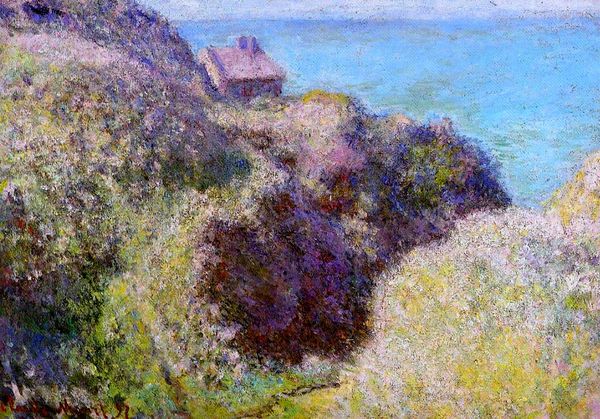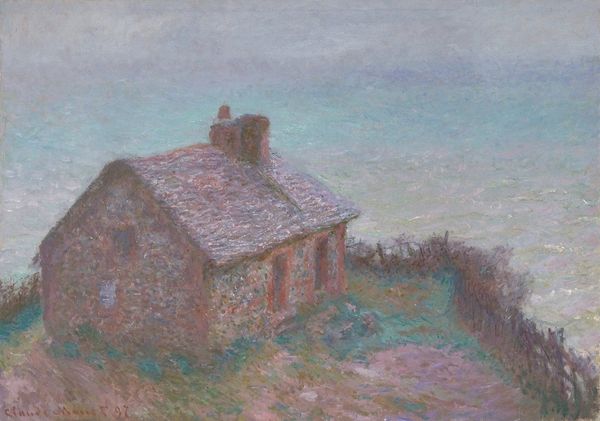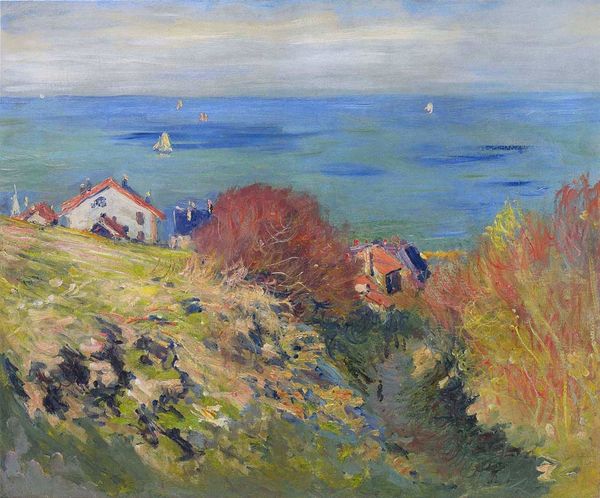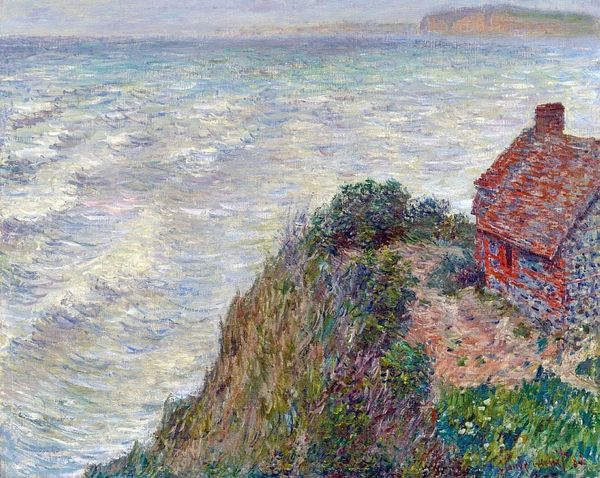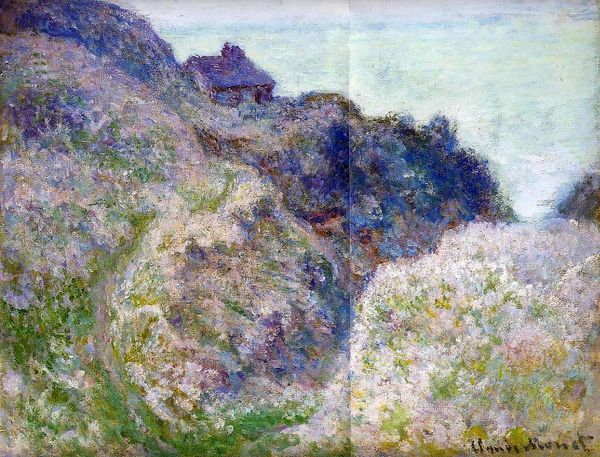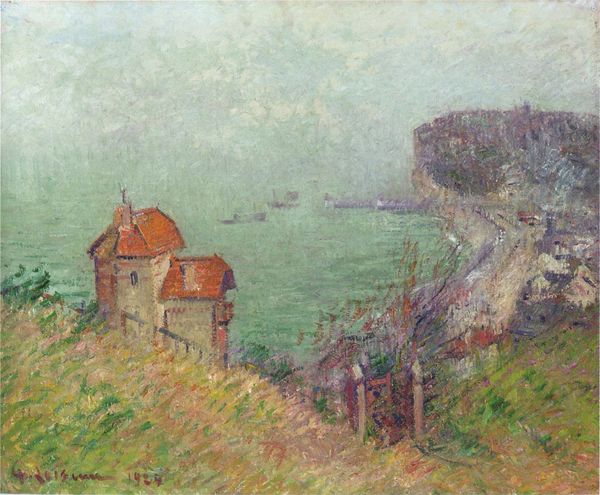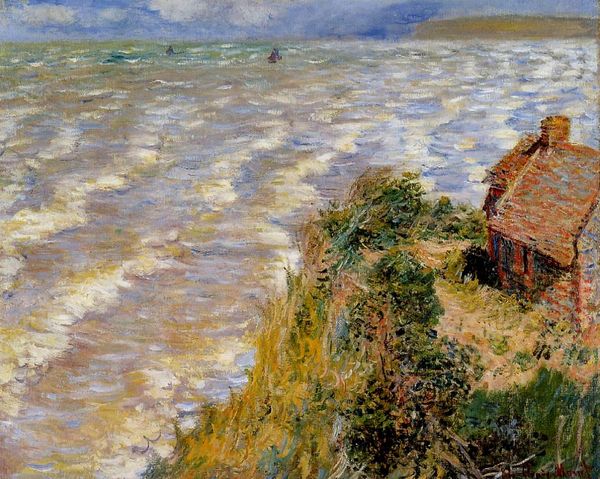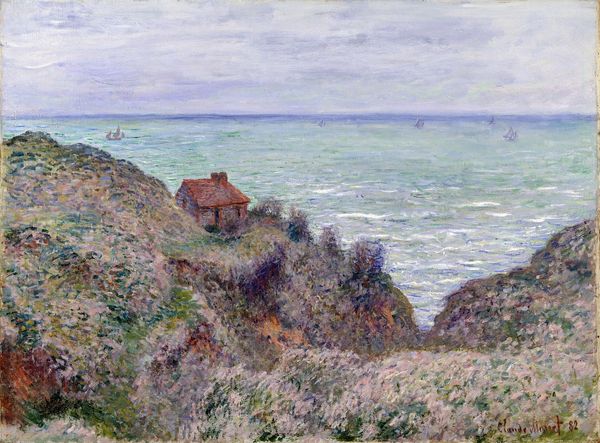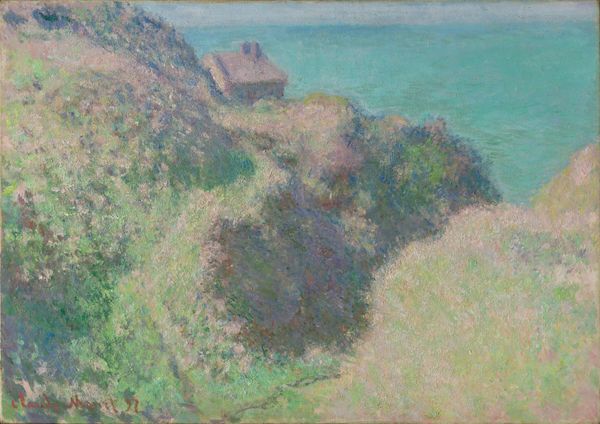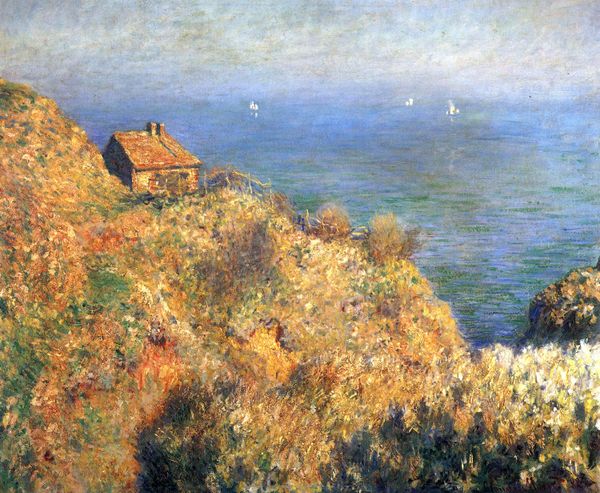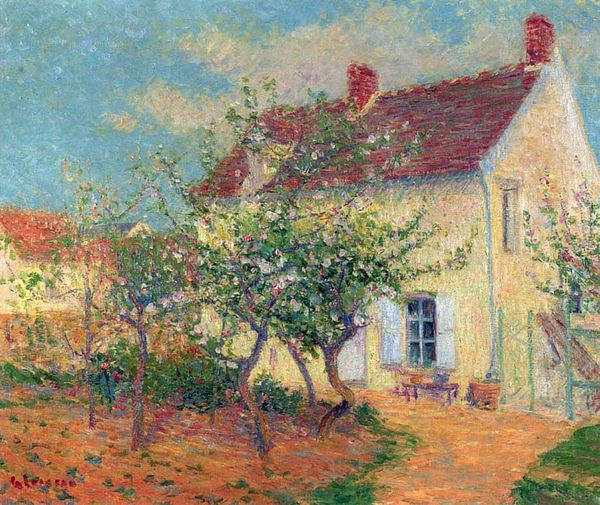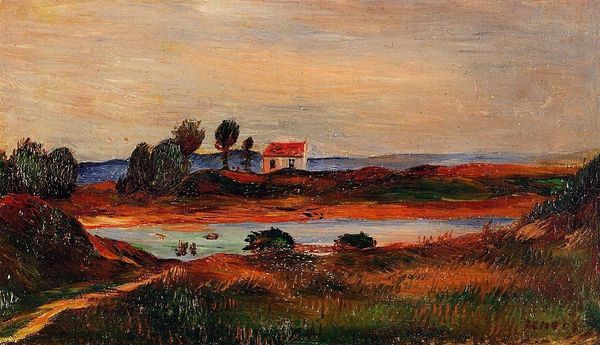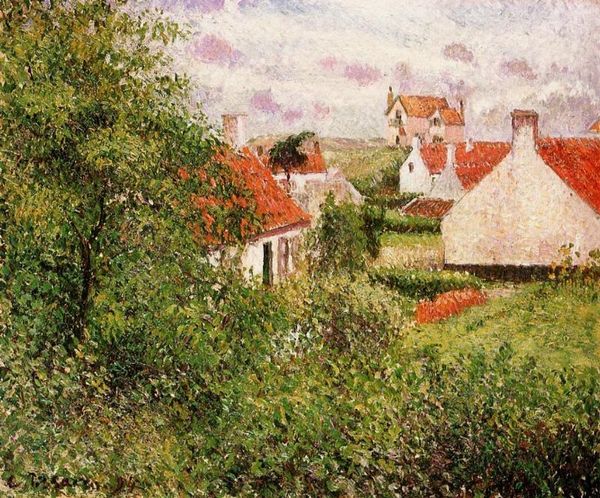
Copyright: Public domain
Editor: Here we have Claude Monet's "Customs House, Rose Effect," painted in 1897 with oils in what feels like the open air. There’s a solitude to this scene, a quiet little house gazing out at a wide, muted ocean. How do you interpret this work, with its subtle use of light and shadow? Curator: The power of Monet's imagery resides in his capturing not just a scene, but the feeling of a specific moment in time. Look at the way he renders the house – the stones themselves seem to shimmer with reflected light. Note that "Rose Effect" in the title. Think about roses. Consider all their symbolism, their historical role as coded language for the Victorians. Is Monet subtly suggesting a narrative here? Editor: A narrative? The Victorians loved assigning symbolic meaning to flowers, didn't they? Are you thinking that the color suggests some message? Curator: Exactly. And color held deep significance, particularly within religious art and royal iconography that continued into the 19th century. Roses, depending on their shade, spoke of love, secrecy, or even mourning. The pink or 'rose' connects, potentially, the building to a larger tradition of the artist's emotional perception. It goes beyond pure aesthetics; what psychological weight might that hue, on this building by the sea, have suggested to viewers in 1897? Editor: I see your point. The rose-tinted view here gives a kind of nostalgic, almost dreamlike quality to the scene, not simply recording reality, but interpreting it with culturally learned emotional associations. Curator: Precisely! And that interplay between observed reality and culturally inherited meaning is what makes Monet such a compelling and enduring figure. Editor: I never thought about impressionism this way; focusing not just on technique but how symbolic meaning persists over time. Thanks!
Comments
No comments
Be the first to comment and join the conversation on the ultimate creative platform.
